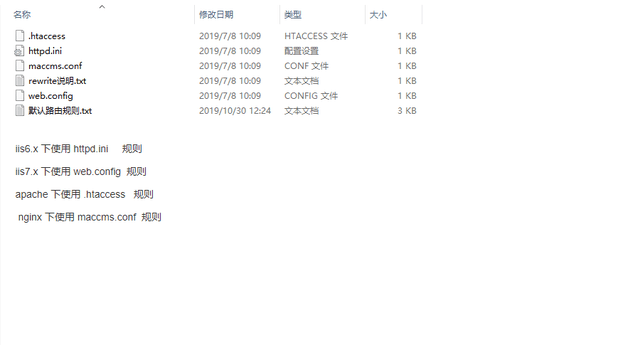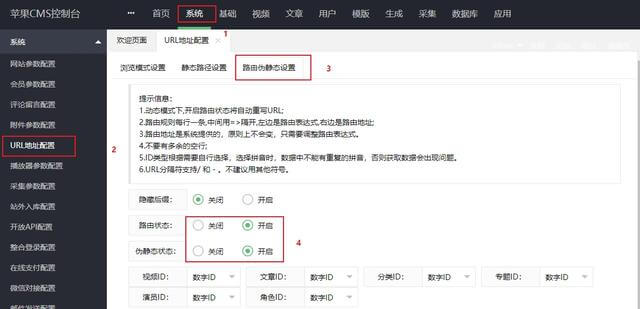Before the Apple CMS pseudo static setting, we need to determine the server environment we use, and then upload the pseudo static rules to the root directory of your website space according to the system environment you use.
Pseudo static format corresponding to different environments
Use httpd.ini rule under iis6. x
Use web.config rule under iis7. x
Use the. htaccess rule in Apache
Use maccms.conf rule in nginx
Apple cms pseudo - static setting method
The iis6. x, iis7. x, and Apache environments can be uploaded directly to the root directory of the website space. These rules have been packaged in the Apple CMS installation package and uploaded by themselves.
After uploading the rules, go to the next step. In the background of Apple CMS, the system ->URL address setting ->route pseudo static setting, turn on the corresponding function button to complete the task.
Finally, modify the corresponding routing rules.
If the pseudo static configuration file under the root directory cannot be called in the nginx environment, we need to configure it manually
Go to the pseudo static setting page in the pagoda panel, copy the rules in the following maccms.conf file here, and then save!
if (!- e $request_filename) {
rewrite ^/index.php(.*)$ /index.php? s=$1 last;
rewrite ^/admin.php(.*)$ /admin.php? s=$1 last;
rewrite ^/api.php(.*)$ /api.php? s=$1 last;
rewrite ^(.*)$ /index.php? s=$1 last;











